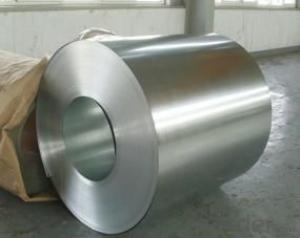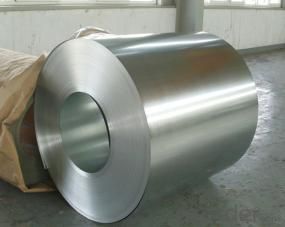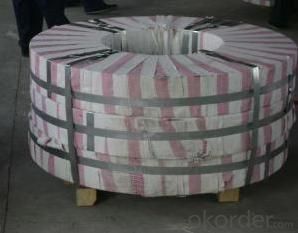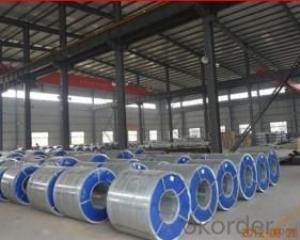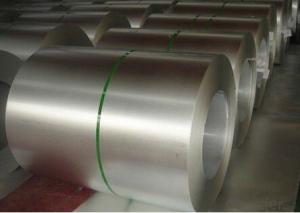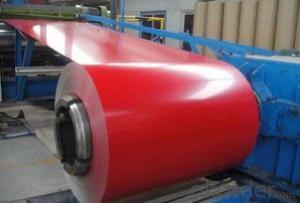316L Hot Rolled Stainless Steel Coil for Construction
- Loading Port:
- Tianjin
- Payment Terms:
- TT OR LC
- Min Order Qty:
- 25 m.t.
- Supply Capability:
- 10000 m.t./month
OKorder Service Pledge
OKorder Financial Service
You Might Also Like
Basic Info.
Model NO.:316L
Type:Stainless Steel Sheets
Shape:Round
Grade:300 Series
Certification:ISO, SGS, BV, AISI, ASTM, GB, EN, DIN, JIS
Perforated:Not Perforated
Standard:ASTM, AISI, GB, JIS, DIN, EN
Technique:Cold Rolled and Hot Rolled
Surface Treatment:Bright
Product:316L Hot Rolled Stainless Steel Coil
Surface:2b, No.1, No.4, Ba, Hl, 8k, Mirror.
Thickness:0.1-150mm
Width:10-2000mm
Length:as Clients′ Request
Color:Bright White
Stock:in Stock
Edge:Slit Edge and Mill Edge
Thick Tolerance:-0.5-0
Process:Cut, Annealed, Pickled, Kaiping, etc.
Export Markets:Global
316L Hot rolled Stainless steel coil
1. Specification:316L stainless steel coil
Thickness: 0.1mm-150mm
Size:1000mm*C
1220mm*C
1250mm/1240mm*C
1500mm*C
1800mm*C
a) This is the usual size that in stock.
b) If you have a large quantity we can order as the size you need.
2.316L stainless steel coil maintenance:
1)Regular cleaning and maintenance
2)Pay attention to prevent the occurrence of the phenomenon of surface scratcges
3)Use soap,weak detergent or warm water to remove surface dust,dirt
4)In addition to the surface of the binder with alcohol or an organic solvent
5)Use neutral detergent or ammonia solution in addition to surface oil
6)With 10% nitric acid,abrasive detergent in addition to the surface of embroide caused by the dirt.
3.Chemical Composition for 316L stainless steel coil
4. 316L stainless steel coil--Machine Capability
Tensile strength (N/mm2Mpa): >=520
Yield strength N/mm2 >=205
Elongation: >= 40
Hardness: HB <=187 BRB <=90
5.316L Stainless steel coil surface:
2B,BA,Hairline-HL,No.4,brush,8K,Polish,SB,Mirror finish.
6. Packing and Delivery
a) Packing: seaworthy wooden pallets,water proof paper,pvc film,interleaving paper,
in 20' or 40' container or as per customers' requirements.
b) Delivery: products in stock can be prepare within 3 days after receiving deposit.
Products as your order can be finished within 15 days under 500 tons.
7.Application of 316L Stainless steel coil:
1)Construction feild,shipping building industry
2)Petroleum and Chemical Industries
3)Food and Mechanical Industries
4)Boiler Heat Exchange
5)Mechinery and Hardware Industries
| Item | GB | 00Cr17Ni14Mo2 stainless steel coil |
| ASTM | 316L stainless steel coil | |
| UNS | S31603 stainless steel coil | |
| EN | 1.4404 stainless steel coil | |
| JIS | SUS316L stainless steel coil | |
| Standard | ASTM A240,GB/T3280-2007,JIS4304-2005,ASTM A167,EN10088-2-2005,etc | |
| Surface | 2B, 2D, BA,NO.1,NO.4,NO.8,8K,mirror , brush, checkered ,embossed,hair line,sand blast, | |
| etching,etc | ||
| Thickness | 0.1~1500mm | |
| Width | 1000mm,1219mm,1250mm,1500mm,1800mm,2000mm,2500mm,3000mm,3500mm,etc | |
| Length | As your request | |
| Chemical | C ≤ 0.30,Mn ≤ 2.00,Si ≤ 0.75,P ≤ 0.045,S ≤ 0.030,Cr:16.00~18.00,Ni:10.00~14.00, | |
| composition | Mo:2.00~3.00, N ≤ 0.10 | |
| Package | Standard export seaworthy package,suit for all kinds of transport,or as required. | |
| Container | 20ft GP: 5898mm( Length )x2352mm( Width )x2393mm( High ) | |
| Size | 40ft GP: 12032mm( Length )x2352mm( Width )x2393mm( High ) | |
| 40ft HC: 12032mm( Length )x2352mm( Width )x2698mm( High) | ||
| Price term | Ex-Work,FOB,CNF,CFR,CIF,etc | |
| Export to | Ireland,Singapore,Indonesia,Ukraine,Saudi Arabia,Spain,Canada,USA,Brazil,Thailand,Korea, | |
| Iran,India,Egypt,Oman,Malaysia,etc | ||
| Application | Stainless steel plate applies to construction field, ships building industry, petroleum,chemical | |
| industries, war and electricity industries, food processing and medical industry, boiler heat | ||
| exchanger, machinery and hardware fields. Stainless steel plate can be made according | ||
| to the customers requirements. | ||
| Contact | If you have any question,please feel free to contact me . | |
- Q: I'm getting new strings on my dad's old acoustic guitar so I can learn how to play it and I'm wondering if I should get nylon or steel strings. Are there any major differences between the two aside from the nylon strings being easier on your fingers? Like do the Nylon strings sound different?
- Well there definitely is a difference in sound. It kind of depends on what type of music you're getting into. If you what to play more pop/rock songs I'd go with steel. But for classical guitar or folk music, go with the nylon.
- Q: How are steel coils used in the manufacturing of telecommunications equipment?
- Steel coils are used in the manufacturing of telecommunications equipment as they serve as a crucial component for the fabrication of various parts and structures. These coils are commonly used to create cabinets, enclosures, and racks that house and protect telecommunications devices such as servers, switches, and routers. Additionally, steel coils are utilized in the construction of antenna towers and other supporting structures, providing the necessary strength and stability for the equipment.
- Q: How are steel coils used in the manufacturing of automotive parts?
- Steel coils are used in the manufacturing of automotive parts as they are shaped and formed into various components such as body panels, chassis frames, and suspension parts. The coils are processed through a series of steps including cutting, bending, and stamping, to create the desired shape and size for each specific part. These steel components provide strength, durability, and structural integrity to the automobiles, ensuring their safety and performance on the road.
- Q: How are steel coils protected against moisture and humidity?
- Steel coils are protected against moisture and humidity through a variety of methods. One common method is the application of a protective coating on the surface of the steel. This coating acts as a barrier, preventing moisture from coming into direct contact with the steel surface. Coatings can be made of various materials such as paint, zinc, or other corrosion-resistant substances. In addition to coatings, steel coils are often wrapped in a moisture-resistant material such as plastic or waxed paper. This wrapping provides an extra layer of protection, preventing moisture from seeping into the coils during storage or transportation. Furthermore, steel coils are typically stored in a controlled environment with controlled humidity levels. This helps to minimize the chances of moisture condensation on the surface of the coils. Storage facilities may also utilize dehumidifiers or other moisture control measures to maintain optimal conditions. Lastly, proper handling and transportation practices are crucial in ensuring the protection of steel coils against moisture and humidity. Special care is taken to avoid exposing the coils to rain or excessive humidity during loading, unloading, and transportation processes. By employing these various protective measures, steel coils can be effectively safeguarded against moisture and humidity, reducing the risk of corrosion and maintaining their quality and integrity.
- Q: What are the main factors to consider when selecting a steel coil supplier?
- When selecting a steel coil supplier, the main factors to consider include the supplier's reputation and reliability, the quality of their products, their pricing and payment terms, their delivery options and lead times, their customer service and support, as well as their ability to meet your specific requirements and specifications.
- Q: What are the different types of steel coil leveling methods?
- There are three main types of steel coil leveling methods: roller leveling, stretcher leveling, and temper leveling. Roller leveling involves passing the coil through a series of rollers to reduce its curvature and improve flatness. Stretcher leveling uses hydraulic or mechanical stretching to remove the coil's internal stresses and straighten it. Temper leveling, on the other hand, subjects the coil to a controlled heating and cooling process to achieve the desired flatness. Each method has its own advantages and is chosen based on the specific requirements of the steel coil.
- Q: What are the different methods of forming steel coils?
- There are several methods of forming steel coils, including hot rolling, cold rolling, and continuous casting. Hot rolling involves heating the steel above its recrystallization temperature and passing it through a series of rollers to shape it into coils. Cold rolling, on the other hand, involves reducing the thickness of the steel by passing it through rollers at room temperature. Continuous casting is a process where molten steel is poured into a mold and then cooled and solidified into coils. These different methods offer varying levels of strength, durability, and surface finish in the resulting steel coils.
- Q: What are the common welding techniques used for steel coils?
- The common welding techniques used for steel coils include shielded metal arc welding (SMAW), gas metal arc welding (GMAW), and flux-cored arc welding (FCAW). SMAW, also known as stick welding, is a manual welding process where an electric current is used to create an arc between the welding electrode and the base material. The electrode is coated with a flux material that provides a shielding gas to protect the weld from atmospheric contamination. This technique is versatile and can be used for both thick and thin steel coils. GMAW, commonly referred to as MIG (metal inert gas) welding, is an automated process that uses a continuous wire electrode and a shielding gas to protect the weld area. The electrode is fed through a welding gun, and an electric current creates an arc between the wire and the base material. This technique is fast and efficient, making it suitable for high-volume production of steel coils. FCAW is a variation of GMAW that uses a tubular electrode filled with flux instead of a solid wire. The flux provides a shielding gas and also releases additional fluxing agents to protect the weld from impurities. FCAW is often preferred for welding thicker steel coils as it provides better penetration and higher deposition rates. In addition to these techniques, other welding methods like laser welding and electron beam welding can also be used for specific applications in steel coil manufacturing. These techniques offer precise and high-quality welds but are typically more expensive and require specialized equipment. Overall, the choice of welding technique for steel coils depends on factors such as the thickness of the material, production volume, and specific requirements of the end product.
- Q: What are the common surface finishes for steel coils?
- The common surface finishes for steel coils include hot-dip galvanized, electro-galvanized, and organic coating finishes such as painted or coated with epoxy or polyester.
- Q: How are steel coils inspected for width variations?
- Steel coils are typically inspected for width variations using non-contact laser measurement systems. These systems use lasers to scan the entire surface of the coil and measure the distance between the coil edges at regular intervals. This data is then analyzed to detect any variations in width, allowing for timely adjustments and ensuring the desired specifications are met.
Send your message to us
316L Hot Rolled Stainless Steel Coil for Construction
- Loading Port:
- Tianjin
- Payment Terms:
- TT OR LC
- Min Order Qty:
- 25 m.t.
- Supply Capability:
- 10000 m.t./month
OKorder Service Pledge
OKorder Financial Service
Similar products
Hot products
Hot Searches
Related keywords
